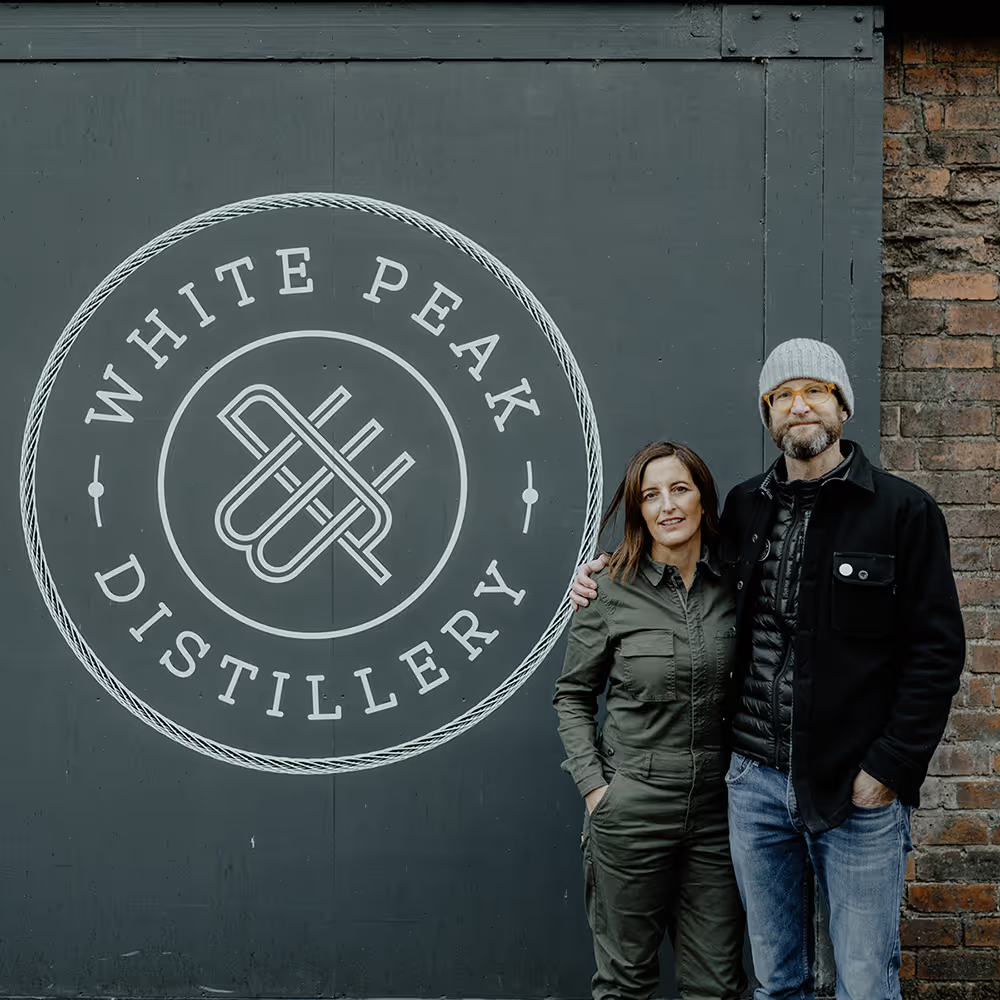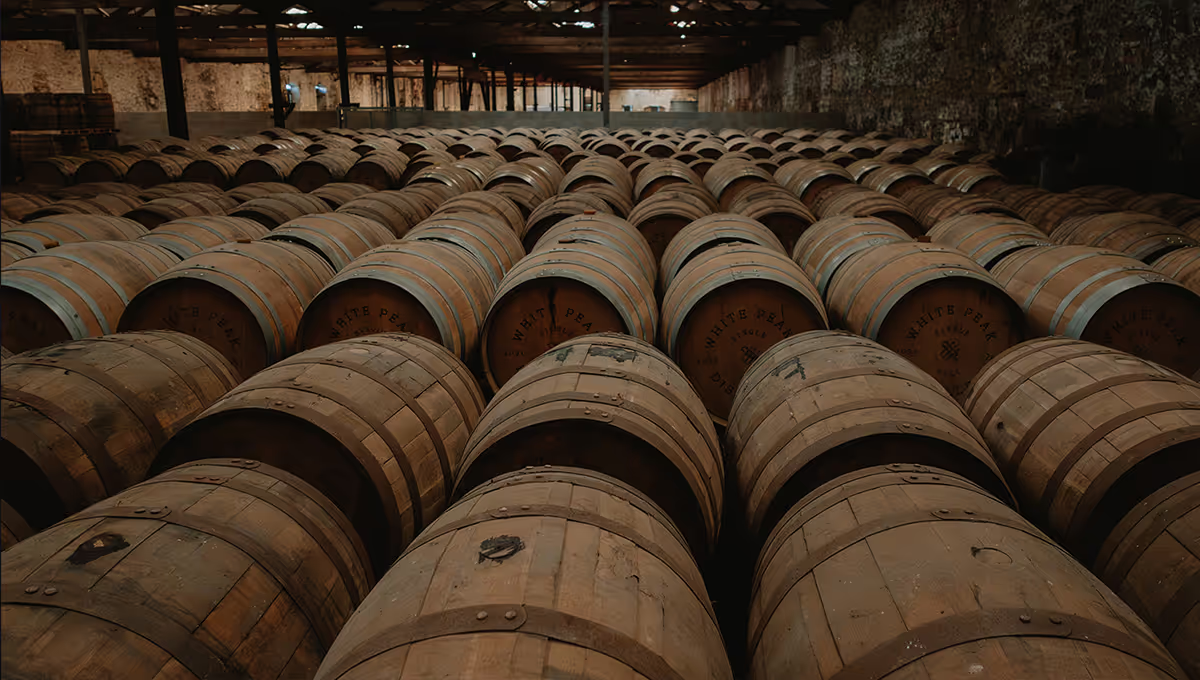
A Peek Into White Peak Distillery
The distillery’s founder, Max Vaughan, explains what makes this more than a quintessentially English whisky, but a definitively Derbyshire dram.
Tell us about your location in Derbyshire...
The area we're in is called a UNESCO World Heritage site called Derwent Valley Mills, which is a 17-mile stretch along the river from a small town called Cromford all the way to the city of Derby. It’s where Britain’s first big cotton mills were established in the 18th century. When my wife Claire and I started looking for a location for a distillery, we wanted it to be in Derbyshire, where we’re both from – hence the name White Peak, which is the name for the southern half of the Peak District – and I wanted it to be by a river, just for romantic reasons, really! So, when we found the old Johnson & Nephew Wire Works on the Derwent, and looked into its backstory, it seemed perfect as the location for our distillery.
Is that industrial heritage important to you?
There's a history of making stuff around here and that’s still happening. John Smedley knitwear is still produced in Matlock – in the oldest surviving factory in the UK - after more than 300 years. The Wire Works had an important place in the community as a major employer for 100 years, from the late 19th century to the 1990s. As the first whisky distillery in this region, we feel a little bit of that legacy, that responsibility... We'd like the distillery to be seen in the same light in 100 years’ time. OK, you might not think there’s much connection between manufacturing metal cables and distilling whisky, but they were making them in in a very honest fashion, making things to last. Similarly, we make decisions based on how they might be viewed in 10 or 20 years' time as opposed to short-term gain.
Does the location affect the whisky directly?
All of our casks are maturing in the warehouses on site, and I think the river and the ancient woodland around us has an effect there. But even more so, our fermenters are open to the environment, so all the natural airborne yeasts have a bearing on our fermentation. And then, there is our connection to beer-making.
Yes, brewing has a much longer history in Derbyshire and just over the Staffordshire border, at Burton upon Trent, doesn’t it?
It does, and there’s a new generation of breweries around here as well. Just up the road in Bakewell is Thornbridge Brewery [which began operating in 2005], which is best known for its Jaipur IPA. We drive up to Bakewell every week to collect some of their spent brewer’s yeast.

How does that affect the flavour of the whisky?
Spent yeast means that Thornbridge has used it once or twice, but sometimes they’d used that yeast three or four times, so what we have is a mixture of live yeast and lees, the dead yeast that has some of the characteristics of the beer. By design, our spirit is fruit forward, with dried and orchard fruits to the fore and the Jaipur yeast helps to elevate these flavours and aromas. Jaipur itself is known for its blend of tropical fruits - think mango and pineapple - and citrus (especially grapefruit) and floral notes. And you can detect those in our whisky too.
One of the reasons the area has a great brewing tradition is the water, but presumably that doesn’t figure as prominently in whisky distillation. You don’t use Derwent river water do you?!
Not in the drinkable product, but it is a working river and we use the same way the Wire Works did – for cooling. There is a piece of infrastructure that we think dates back to the 1930s... a cast-iron gantry that reaches out to the deepest part of the river and can hold a submersible pump. We have an Environment Agency permit that allows us to extract water and return it to the river. That permit ensures we add nothing to the water, no chemicals leaching into it or anything like that (all we do is filter out particulates that might clog up our pipes), and also that there isn't too large a temperature differential when we return it to the river – so we aren’t pumping overheated water back in.
Is there a specific style you would say differentiates you – and perhaps other English single malts – from your cousins north of the border?
One thing about the majority of English whisky-makers is that we are owner-operators, so we’re invested in our distilleries in the widest sense of the word. And we’re very conscious of the single malt heritage north of the border, so the only way we can compete is to focus on flavour and quality, not mass production. You can take some bold decisions when you don’t expect to extract maximum volume, and we have greater opportunities for flexibility. For example, we choose to have a lightly peated malt, because we think that best serves our whisky, rather than because it’s the tradition in Derbyshire. Although the history of making whisky in England does go back hundreds of years, there was a 100-year period before this century where none was made at all. Without that continuous legacy, there are fewer constraints than in Scotland. So, for example, in England, there's no requirements to use oak casks for ageing and no restriction on what those casks may have been used for before. We are part of the English Whisky Guild, which is pushing for a geographical indication for English whisky, but we want to go down the route of transparency rather than restriction – age in whatever wood you like but be clear on the label about it.

